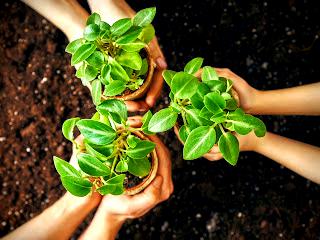7 essential plant care tips we learned this year
(Not so) new plant parents, unite! I hope you learn from the defeats of those who came before you.
With everything going on in the world, 2021 was the year most of us became fully responsible and successful plant parents. But before we reached this level of enlightenment, we had to endure a long and confusing learning process with the help of real-time feedback from our plants, the true heroes of this effort.
That's why we salute beginner-friendly pothos that survive even after forgetting to water them for two weeks. We pay tribute to succulents that are low maintenance, hardy and incredibly cute. We bow to philodendrons, leaves that grow profusely despite the most negligent care.
If 2022 is the year you finally set sail on your own plant-parenting journey, let us (and our plants) leave you some information.
How to collect native plant seeds
Listen, you don't have to hit your local nursery or spend your hard-earned coin on the latest plant-Tok trend. You can start your own local herb garden by collecting seeds from greens that are already growing in your neighborhood.
The harvesting process is generally simple, fast and requires little or no tools or materials. But you must know what you are doing, accept the long tradition you have joined, and understand your impact on your local ecosystem.
Beyond that, native plants are easy to care for and are a great choice if you want to revitalize the soil in your garden.
What killed your carnivorous plants?
Maybe you skipped the whole pothos stage of raising children and went straight to dealing with exotic species, only to find disappointment and death - exhausted, not yours.
Our Factory columnist, Ellen Airhart, knows this feel-good and shared her experience trying to revive a drying Pinguicula and Sarracenia. Spoiler alert: it failed. But its failure may be the lesson you need to keep your precious carnivorous greens from wilting.
How do you make sure your plants love the soil they're in?
Most people focus on light and water and completely forget the importance of soil in the development of your green baby.
Very simple:The dirt your plant lives in provides essential nutrients for growth. If you're not willing to drink a latte because it's made with the wrong milk, your plant may not like the food you're serving, either. Although her version of asking the barista to remake the drink dies straight.
Save yourself some trouble and buy a potting mix made with your plant species in mind. If you have a succulent plant, opt for fast-draining soil or a growing medium made specifically for cacti. It's not enough to familiarize yourself with products like perlite, lecca or sphagnum moss and how (or a combination of these) can help your leafy child thrive.
Give your garden the best chance of survival with our handy soil guide.
How do you ship your beloved houseplants nationwide?
If 2021 is the year you try to work from anywhere, or if you've decided it's time to fulfill your dream of living by the sea, you've probably asked yourself a question: How do I harvest my plants?
Well, we got the answer. It's all about choosing the right packing materials, avoiding the wrong ones, and giving your greenery extra affectionate, loving care while they're at their final destination.
Don't be surprised if some don't make the trip. Plants do not like change and carriers are sometimes not as sensitive as we would like. But giving your plants the best start will increase your chances of reuniting the family safe and sound in your new home.
How can you prevent your plants from killing your pets?
Some plants are toxic to cats and dogs. It's a defense mechanism - they can't escape or bite, so they use chemical compounds to harm predators. It's that simple.
But if your space has total aesthetics, we found four non-toxic plants that are great alternatives to classic house greens. That way, you can get rid of the potted pet poison and replace it with something that won't end with a trip to the vet.
If you have to say goodbye to some of your leafy children, don't leave them on the sidewalk - make sure you find them a good, loving home.
How to plant a garden (or lawn) that helps the planet?
Giving back to the environment and your community can be as easy as choosing carbon sequestrant plants for your garden.
If you don't know where to start, we have a guide for you on what types to buy, how native plants will work better, and which fertilizer isn't actually terrible for Earth.
Another way to lend a helping hand to the environment is to completely shred your lawn. (We'll give you a minute to recuperate.) Despite being a suburban classic, perfectly manicured lawns are very bad for the planet – they require a lot of maintenance, need significant amounts of water to survive, and take up tons of space. can be used by pollinator friendly flora.
If you're tired of mowing, here's how to start and what to plant for best results.
How to grow, harvest, preserve and use
aloe vera Aloe vera is a great plant to have around. It's beautiful and low-maintenance, and its medicinal properties - from aiding digestion to healing burns - can make it a staple of your emergency kit.
